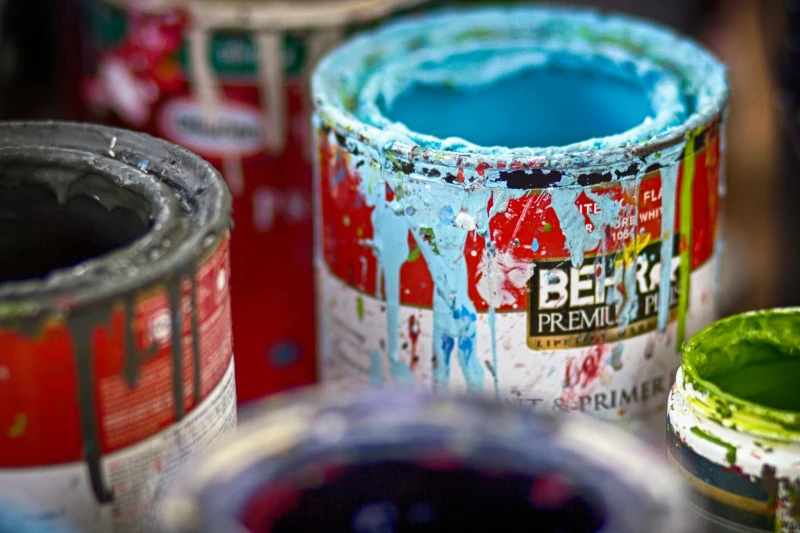We recycle plastics, paper, food waste but house paint? Why, and what happens to it?
Living in Marin County, California, most of us are hyper-aware of the need to practice habits that protect our environment. We’ve got the green can for left-over scraps of food and the vegetation cuttings from our yards. We have a half can for paper and the other half for glass and plastics recycling.
Hazardous Waste
We’ve also been drilled on the need to carefully dispose of hazardous materials, like used plastic containers of laundry detergent and expended batteries. Those need to go to a hazardous waste site and not get dumped into a recycling bin or our garbage cans. ZeroWaste can help with questions about that.
Is Paint Considered Hazardous Waste?
You can find a full list of what are considered hazardous materials on California’s CalRecycle site. They even have a page dedicated to items you can’t throw into your trash. The reasons are sound and protect people and the planet. Paint is on that list.
Another benefit to recycling products is that we stretch our resources even further. That’s true for recycled paint. It doesn’t just get thrown away. It can be blended together and reused to paint homes and businesses and also for creative use in other products.
Of course, there are strict rules regarding all of this. PaintCare.org is a great resource, providing everything from nationwide drop off site locations to helpful tips on every step of the painting process. They clearly state products they won’t accept:
PaintCare sites do not accept aerosol coatings, solvents, and products designed and labeled to be used for industrial or non-architectural use … Containers that are leaking, empty, or without the original printed manufacturer’s label are not accepted at drop-off sites.
How Is Recycled Paint Actually Used?
Left-over paint can be recycled back into paint that can be bought and used just like “virgin” paint. A list of manufacturers and brands offering recycled paints is available at https://www.paintcare.org/manufacturers/. (You’ll need to scroll down to the bottom of the page and enter your state.)
The other products that use recycled paints in their productions are bricks, retaining wall blocks, landscape stones, parking stops, roofing materials and flooring compounds.
Advantages of Reusing Paint?
According to Paint & Coatings Industry :
- One gallon of recycled paint saves 100 kilowatt-hours of energy and keeps 120 pounds of CO2 out of the air.
- One gallon of recycled paint saves 100 kilowatt-hours of energy and keeps 120 pounds of CO2 out of the air.
- One gallon of recycled paint saves half a gallon of fresh water.
Need more? Using recycled paint helps to:
- Protect the Environment
Paint contains toxins that can seep into the ground, damage vegetation and contaminate groundwater systems. Recycling can prevent this. - Save Resources
By reclaiming paint that can be repurposed, manufacturers use less of the virgin materials that would be used to create new paint products. - Reduce the Size of Landfills
Landfills are filling up fast enough without adding toxic, half-full cans of paint.
If you have a home improvement project in mind, give us a call or book a complimentary consultation to explore the possibilities.


